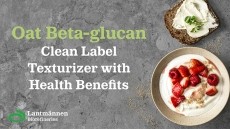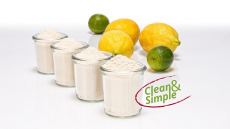Palsgaard receives US approval for chocolate emulsifier
US manufacturers to replace the commonly-used soy lecithin,
following its recent approval by the nation's regulator.
The firm's ammonium phosphatide ingredient, sold under the brand name Palsgaard 4448, has been used in Europe for around a decade, and in the UK for over 40 years.
It gained popularity as an alternative emulsifier, following origination concerns in Europe as soy lecithin is generally derived from genetically modified material, explained the company's technical sales manager Hans-Henrik Wikman.
Although such concerns have on the whole not spread to the US, Palsgaard applied to the Food and Drug Administration (FDA) for approval of its ingredient mainly as a result of the growing globalization of the food market.
"We had received requests from chocolate manufacturers in both the US and Europe who are working on a global market and do not want to have to change their formulations depending on whether the product is designed for the domestic market or the export market," said Wikman.
The firm this summer received a response letter from FDA, which raised no objections to the self-affirmed GRAS (generally recognized as safe) status of the ingredient.
Ammonium phosphatide is made from rapeseed oil and glycerol - phosphoric acid is attached to these through a chemical process, and is then neutralized with ammonia.
Palsgaard says it is the only firm to be selling this ingredient globally.
The firm claims the product can be interchanged freely with soy lecithin in an application, at a 1:1 substitution.
Both soy lecithin and ammonium phosphatide work as emulsifiers in chocolate applications to reduce the viscosity of liquid chocolate during production.
According to Wikman, soy lecithin is the preferred choice in the US, and is likely to remain so.
The firm expects the main market for its ingredient to be US manufacturers exporting products to Europe, or European manufacturers exporting to the US.
The current price for standard soy lecithin is around $1.4, whereas if manufacturers want to purchase a guaranteed GM-free version of the ingredient, they must fork out around double that.
Wikman said the price of its ammonium phosphate is in the same range as the guaranteed GM-free lecithin.
The two main advantages that the ingredient claims over soy lecithin are a cleaner flavor and no allergenic issues or GM concerns related to soy-based ingredients.
The company also says its ingredient has the ability to lower the plastic viscosity without bringing up the yield value in applications; it is easy to handle as it does not thicken at temperatures below 40°C (104°F); and it has high microbiological safety as it reaches more than 140°C (284°F) during processing and is practically water-free.
In the US the ingredient must be labeled with its full name: ammonium phosphatide.
In Europe it can also be labeled as an E number E442.
Palsgaard said its ingredient is immediately available for customers in the US.



























